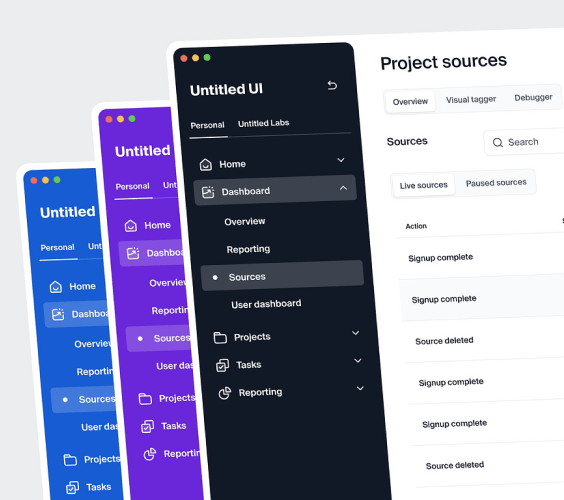A humble guide to resistance to change
Enterprise Resource Planning (ERP) systems can surely enhance any organization’s efficiency, streamline processes, and improve decision-making, if leveraged properly. And while AI, LLMs, GenAI & RPA etc are probably the future game-changers; business owners understand that they will require a single, unified platform which will help run their businesses – efficiently and effectively. However, despite the clear benefits, one of the biggest challenges in any ERP implementation is resistance to change (we mentioned “resistance” in our last article here). Employees worry about disruption to their familiar lifestyles, working styles and possibly be scared about losing their jobs. So while business owners may have chosen the right ERP system, the right implementation partner with the right budget, have control over the right datasets etc and generally done all things right. Without addressing “resistance” that employees and other stakeholders might have, business owners cannot successfully implement an ERP system. In this article, we’ll explore the major causes of resistance to ERP implementation that we have identified from working with more than 100 clients from the last 7 years since we began operations. And remember, as Steven Pressfield mentioned: Here are the various stages (or states) of Resistance to Change during ERP Implementation We have listed the following stages of resistance that we have experienced from our humble experience. They may not follow a set order but we have experienced in one way or another. 1. Denial The first stage (or state) of resistance is denial. Employees do not believe (or have any awareness) that the ERP system is necessary and that it will impact them directly. This often occurs in the early stages of planning when leaders announce the upcoming implementation. For example, the CEO of a manufacturing company consulted with Intellore Systems (us) to implement an ERP system that would improve supply chain management (& overall efficiency). According to this CEO, employees in the procurement and accounting department were living in two states – 1. Maharashtra and 2. Denial. (That was funny indeed.) He also mentioned that employees from these two departments would have the most questions for us. He was WRONG. They DID NOT ask even a single question. They were in complete denial and mentioned that they were “FINE” and didn’t really require an ERP system as they were already functioning without any ERP systems (some even argued that business was not growing and the new ERP system would add to unnecessary costs). 2. Anger & Frustration (& possibly prayers as well) As the ERP implementation progressed anyway (we convinced the owner and other stakeholders), the employees began to see the implications of the change, the denial turned into frustration (followed by even more denial and frustration) which occasionally turned into blind rage (okay this is not what happened – but you get the idea). This stage is marked by complaints and concerns (and lots of “I told them this would happen”). Employees may feel anxious about their ability to adapt to new technology and processes. (and pray that the ERP system, consultants or developers associated with this project magically disappear.) For instance, when a non-profit organization implemented a new ERP system, some staff members expressed anger about not being able to interact with donors directly (they were not interacting to begin with) and instead having to learn a new software system. They often complained to the founder that our assigned developer was cold (gasp!) and did not explain properly (she had prepared a detailed thorough manual which listed the steps – In two languages!) But they felt overwhelmed by the sudden appearance of an ERP system in one of their systems (we hosted it on the cloud) and were concerned that this system would slow them down and possibly replace them. It did not. 3. Bargaining (or negotiating) At this stage, employees (only those who are resisting change) will negotiate with leadership and offer alternatives to avoid using the new ERP system. Delays, requesting modifications, finding faults are some of the observed behavioural traits. Bargaining often occurs when employees fear job loss or there is a significant shift in their role. We had partnered with a healthcare provider that introduced an ERP system to manage patient records. The administrative staff, concerned about many things (fear amongst them), requested that they continue using their previous system alongside the new one. The previous system relied on excel sheets, images of bills scanned and hold your breath – details on text messages exchanged with suppliers. 4. Disengagement After bargaining, employees may feel defeated and resign themselves to the inevitable change, often leading to low morale and disengagement. Productivity might dip as employees experience stress or uncertainty about their place in the organization post-implementation. (not our words.) This stage is critical because it can severely affect performance if not addressed. The introduction of the new ERP system caused significant anxiety among the accounting and inventory management team for one client. They worried that automation would render some of their roles and responsibilities redundant, leading to mass disengagement from the project. 5. Acceptance (not exactly like the image above. Also ALL Images are meant for illustrative purposes only!) The final stage is acceptance, and this is where employees begin to understand the benefits of the ERP system and start to embrace the new ERP System. This shift occurs when employees receive adequate training, see the ERP system functioning in real-world scenarios, and begin to realize how it can make their work & life easier. So, while the accounting team went into depression, the procurement team of this manufacturing company was elated upon finding that the new ERP system streamlined inventory tracking, they became more enthusiastic about using the software. Eventually, their enthusiasm rubbed off on the accounting team as well! (HR remains sceptical – but we will keep you updated about their well-being!) So while we have looked at the stages (in detail), we would also mention some major causes as well. Some major Causes of Resistance to ERP Implementation (in our




